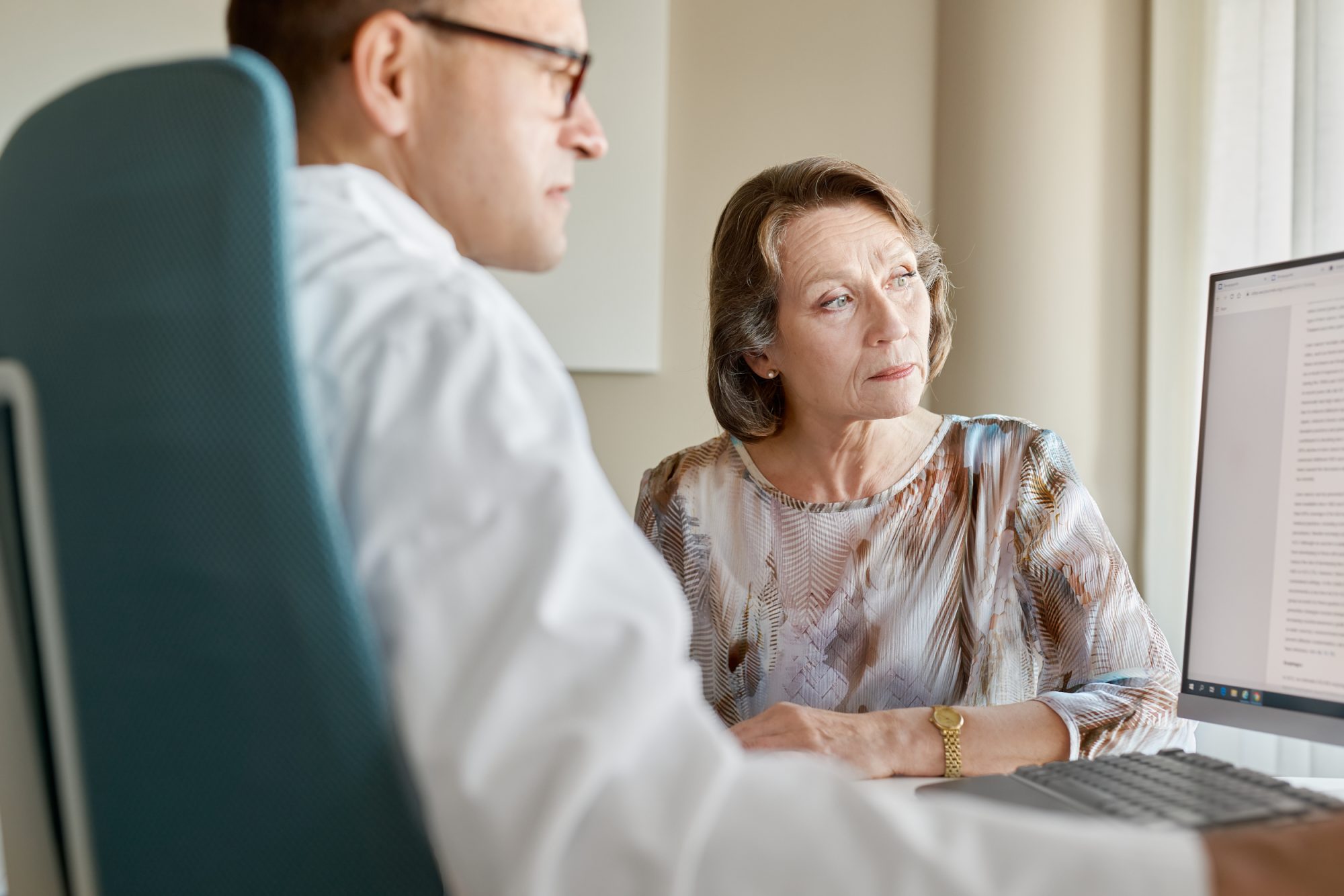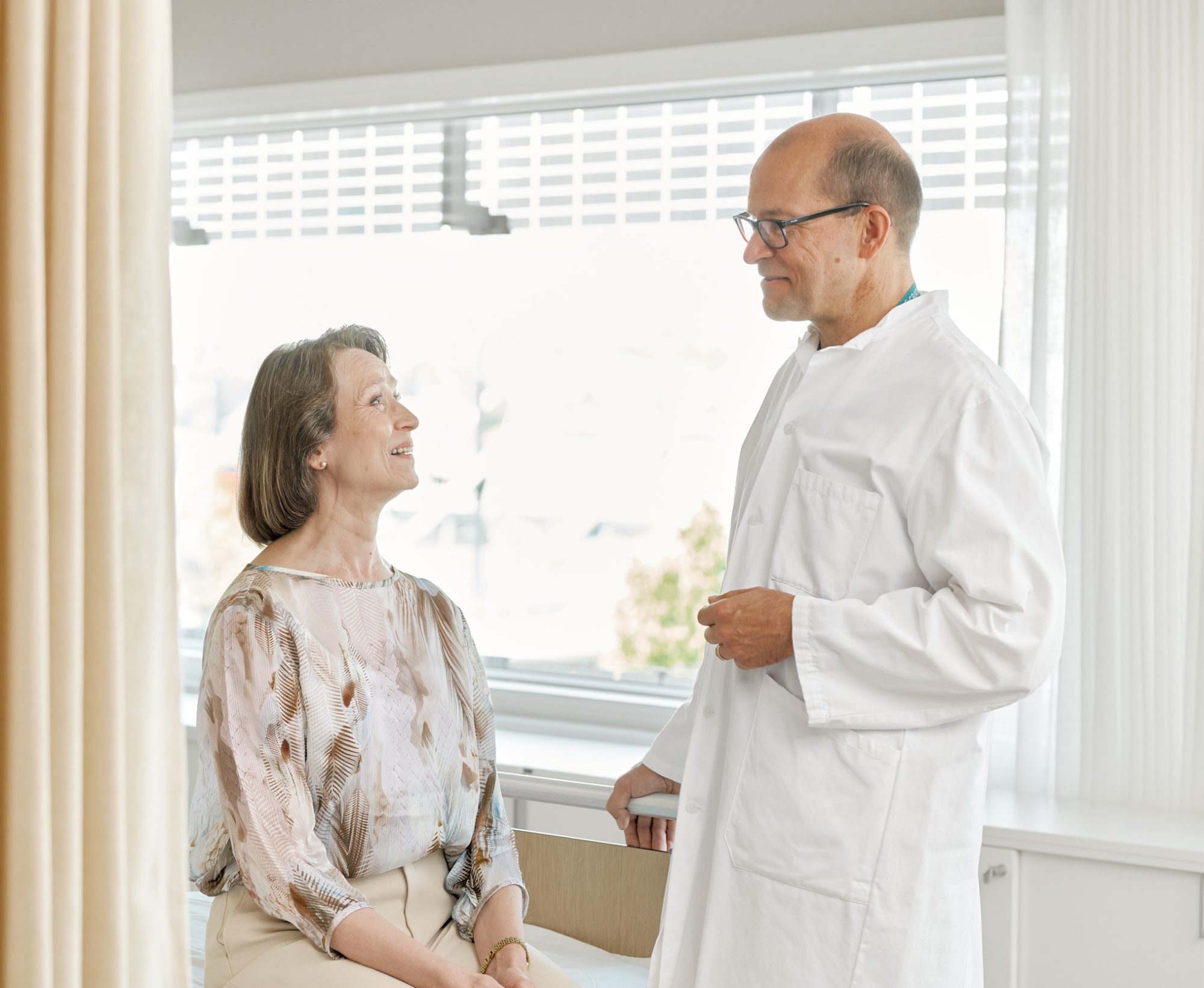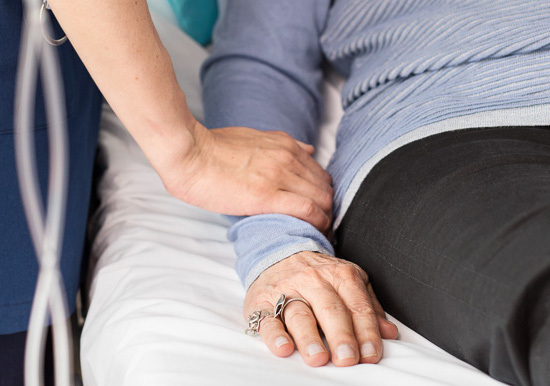Physical activity can improve the quality of life of cancer patients and the effectiveness of cancer drugs
13.12.2021 Categories: Articles
–Improvement in the quality of life was clearly demonstrated in a pilot project for prostate cancer conducted in 2018 at Tampere University Hospital, says PhD and specialist in oncology and occupational health, Jorma Sormunen from Docrates Cancer Center. Sormunen defended his doctoral dissertation on the effect of physical activity on the incidence of cancer with a special emphasis on prostate and colorectal cancers.
–It also seems that physical activity promotes the effect of cancer treatments. An article published in the Finnish Medical Journal in November 2019 (46/2019) summarised various studies and observed that physical activity during treatment may be surprisingly impactful. It is possible to argue that physical activity corresponds to the effect of a good cancer drug. The effective mechanism is based on factors such as enhanced circulation of blood, which helps medicinal substances travel to the tumor, says Sormunen.
The benefits of health-enhancing physical activity begin with the first exercise
–Physical activity has an immediate effect: even exercising only once has positive effects throughout the body. It increases your heart rate and boosts your circulation; the heart pumps more blood and the blood flows through the veins more rapidly. Your breathing is more efficient and more oxygen travels to your lungs. Your muscles get more oxygen and nutrients to fuel the muscle work as a result of improved circulation. You sleep better after exercising, and so on, says Sormunen.
The benefits of health-enhancing physical activity begin with the first exercise and increase as physical activity becomes more regular. It slowly improves the bones, muscles and respiratory and circulatory systems.
Evidence of the positive effects of physical activity
Studies carried out around the world also indicate that physical activity really has a positive effect.
Jorma Sormunen shares a few interesting studies on patients with prostate cancer:
- According to the results of a cohort study by Kenfield et al. (2011) that involved 2,705 men diagnosed with prostate cancer, the risk of dying of prostate cancer was 61% lower in those who exercised a lot than those who exercised only little. Similar results have been gained in other cohort studies.
- The risk of recurrence (according to the PSA value) among men who had prostate cancer was 57% lower in those who walked briskly for more than three hours a week than those who walked less than three hours (Richman et al. 2011). The reliability of the results is backed up by the fact that PSA goes up even before patients have any symptoms that reduce the amount of physical activity.
- In an Australian study, 119 patients with prostate cancer were divided into the physical activity group (53) and the control group (66). The study showed that, regardless of hormonal therapy, the strength, mobility and condition of the heart and circulatory system of prostate cancer patients could be improved through physical activity. (Gaskin et al. 2016).
- The oxygen uptake of both prostate cancer and diabetes patients can be improved through team sports (football). (Milanovic et al. 2015)
- A meta analysis shows that gym workouts improve muscle strength and body composition, even if the patient is undergoing hormonal therapy. (Keilani et al. 2017)
Find a suitable way to be physically active
Physical activity thus has undeniable benefits for cancer patients. But what should you do if you have had a long pause in exercising? Sormunen recommends a slow start.
–Try fun ways of exercising. You can and should be physically active throughout the week and, if possible, as part of daily chores. An activity does not need to last long. It is better to be even a little active than be inactive altogether, says Sormunen.
Exercises for healthy bones are particularly important for the elderly.
–Exercises that improve body control, balance, muscle strength and confidence in mobility prevent fractures from falling. Suggested modes of exercise include different types of walking such as basic walking, stair walking, walking in undulating terrain, Nordic walking and skiing, dancing, exercising at home or in a class as well as gym workouts.
Even patients undergoing heavy chemotherapy can exercise as much as they feel.
–I recommend these patients to even bend their legs a little when lying in bed. Nothing is preventing them from using light dumbbells if they feel like it.
Patients with prostate cancer undergoing chemical castration should definitely be physically active.
–The therapy takes away muscle mass and even alters your skin, says Sormunen. Physical activity helps grow and maintain muscle mass at this stage as well.
Oncologist’s physical activity tips for cancer patients
- Be moderately active as regularly as possible, for example, through daily activities and chores, taking easy walks, etc.
- You should engage in moderately strenuous physical activity for a little more than one hour a week or, alternatively, in an activity that elevates your heart rate for a little more than two hours a week.
- Muscle strength, balance and agility should be trained a few times a week.
- You should try a variety of different sports and activities.
- Muscle strength training is an excellent choice. Ideal activities include exercising at the gym or at home with dumbbells or rubber bands. The best way to strengthen bone tissue is to do quick movements with relatively heavy weights or resistance.
- The best way to strengthen bones is to do exercises where the bones are exposed to shock, quick twists, turns and impacts. Bones need new stimuli, so you should try different activities and sports. Take a few sprints while having a Nordic walk, for instance.
- Games that involve a ball or racquet, working out and dance are also good options as they expose the bones to shock, changes of direction and impacts.
- Challenge your partner or friend to join you!
- Be kind to yourself—exercising does not always need to fulfil all of these criteria. Enjoy exercising and the fact that you are making progress!
References:
- McTiernan A ym. Physical activity in cancer prevention and survival: a systematic review. Med Sci Sports Exerc 2019;51:1252–61.
- Leitzmann M, Powers H ym. European Code against Cancer 4th Edition: Physical activity and cancer. Cancer Epidemiol 2015;39:S46–55.
- Sormunen J, Talibov M ym: Perceived Physical Strain at Work and Incidence of Prostate Cancer – a Case- Control Study in Sweden and Finland. Asian Pac J Cancer Prev. 2018 Aug 24;19(8):2331-2335. doi: 10.22034/APJCP.2018.19.8.2331.
- Penttinen H, Sormunen J: Liikunnan vaikutus syövän ehkäisyyn ja sairastuneiden kuolleisuuteen. Lääkärilehti 46/2019 vsk 74 s. 2656-2659.
- Moore SC, Lee I-M ym. Association of Leisure-Time Physical Activity With Risk of 26 Types of Cancer in 1.44 Million Adults. JAMA Intern Med 2016;176:816.
- Kenfield SA, Stampfer MJ ym. Physical activity and survival after prostate cancer diagnosis in the health professionals follow-up study. J Clin Oncol 2011;29:726–732.
- Richman EL, Kenfield SA ym. Physical activity after diagnosis and risk of prostate cancer progression: data from the cancer of the prostate strategic urologic research endeavor. Cancer Res 2011;71:3889–3895.
- Gaskin C, Fraser S ym: Fitness outcomes from a randomised controlled trial of exercise training for men with prostate cancer: the ENGAGE study. J Cancer Surviv 2016 Dec;10(6):972-980. doi: 10.1007/s11764-016-0543-6.
- Milanovic Z, Pantelic S ym: Is Recreational Soccer Effective for Improving VO2max A Systematic Review and Meta-Analysis. Sports Med. 2015 Sep;45(9):1339-1353. doi: 10.1007/s40279-015-0361-4.
- Bjerre E, Petersen T ym: Community-based football in men with prostate cancer: 1-year follow-up on a pragmatic, multicentre randomised controlled trial. PLoS Med. 2019 Oct 1;16(10):e1002936. doi: 10.1371/journal.pmed.1002936. eCollection 2019 Oct.
- Keilani M, Hasenoehrl T ym: Effects of resistance exercise in prostate cancer patients: a meta-analysis. Support Care Cancer. 2017 Sep;25(9):2953-2968. doi: 10.1007/s00520-017-3771-z.
- Bourke L, Smith D ym: Exercise for Men with Prostate Cancer: A Systematic Review and Meta-analysis. Eur Urol. 2016 Apr;69(4):693-703. doi: 10.1016/j.eururo.2015.10.047.
- Hackshaw-McGeagh L, Perry R ym: A systematic review of dietary, nutritional, and physical activity interventions for the prevention of prostate cancer progression and mortality. Cancer Causes Control. 2015 Nov;26(11):1521-50. doi: 10.1007/s10552-015-0659-4.












